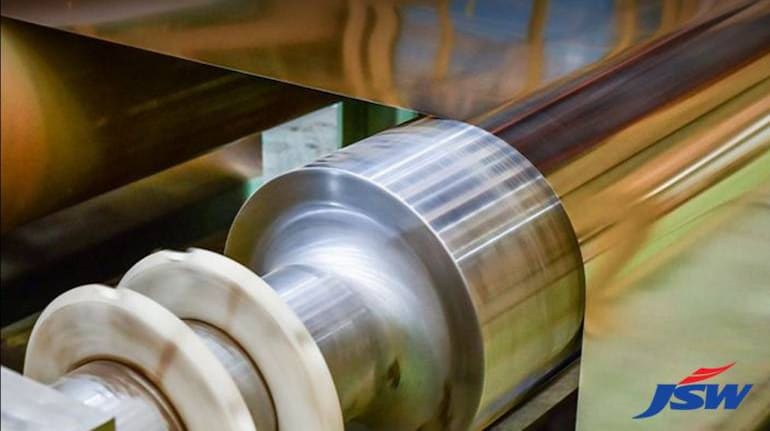



Steel and user industries in India are in for more price shocks as iron ore rose to a near 10-year-high on January 14, with Chinese customs data showing record imports by Beijing.
They can expect some relief after the first quarter of 2021, with prices expected to drop in the second quarter and even below $100 a tonne in the following quarters.
Iron ore prices increased to 10-year-high in December before retreating on reports of China wanting to reduce its steel output.
Mining.com, quoting Fastmarkets MB, reported that the benchmark 62% Fe fines imported into Northern China (cost and freight Qingdao) changed hands at $172.36 a tonne, up 1.3 percent from January 13.
According to the Trading Economics website, iron ore prices for delivery into the Chinese port of Tianjin ruled at $170, while ore with 62 percent ferrous content quoted at $169.8 a tonne.
Iron ore prices have gained 7.25 percent to nearly nine percent for various grades since the beginning of 2021. This follows an 80 percent increase in ore prices last year. Current prices were last seen in September 2011.
Also read: There is a cartel in cement and steel industries, says Union Minister Nitin Gadkari
Record ore imports by China
Prices began to ascend again after data showed that China, which accounts for about 70 percent of global imports, bought 1.17 billion tonnes of ore in 2020, a record after it bought 1.07 billion tonnes three years ago.
Before the data came out, iron ore prices had begun to soften after December peaks as China's industry and information technology ministry said the steel industry must reduce its crude steel output in 2021 as part of low-carbon initiatives under the country's 14th five-year economic plan.
Despite the coronavirus pandemic affecting steel production across the globe, China continued to show a positive trend in 2020. Till November, it had produced a record 963 million tonnes of steel.
Chinese production up 5.5 percent
According to the World Steel Organization, steel production in the 64 countries declined 1.3 percent during January-November last year, while China’s output increased 5.5 percent.
A major reason for the surge in iron ore prices is China’s record steel output and shortage in supplies as some of the countries are still reeling under the impact of COVID-19.
Most of China’s iron ore supplies are sourced from Australia. The Australian government expects the Chinese demand to remain strong, though exports to Beijing are expected to slide 0.5 percent this season (August 2020-July 2021).
Australia’s commodity research unit ABARE has predicted iron ore prices to ease to $80 a tonne by the end of 2021 and further to $75 in 2022.
ABARE’s projections are supported by a survey done by S&P Global Ratings, which expects prices to moderate during 2021 and 2022. During the current quarter, the rating agency expects prices to remain high as Chinese steel production continues to be strong.
Freight charges may ease, helping to cool iron ore
Iron ore prices are likely to ease also because shipping costs are expected to decline as bulk carriers are having problems in finding more coal exporters.
This has resulted in more ships being available to ferry iron ore, especially from Australia to China. According to Shanghai Shipping Exchange, the iron ore freight index dropped by 53.26 points on January 15 from a week ago to 998.44.
High ore prices unviable for steel firms
The high prices are seen as unsustainable since steel firms’ margins could be affected. This will be more so when China discontinues its fiscal stimulus measures, which will reflect on demand for steel products.
The steel industry in China has already begun complaining of the near-record high prices and sought action from its government.
On the other hand, inventories of iron ores at the port have grown to over 100 million tonnes.
Investing Australia said that Chinese steel producers might try to cut production if ore rules at current levels, though it expects the demand to remain high.
It expects the prices to come under pressure since demand in other regions such as Europe and South Asia might be hit due to the spike and Chinese appetite might be nearing an end.
The Indian scenario
The iron ore price scenario should witness two developments in India. One, Indian miners will be looking to cash in on the current opportunity.
China accounted for about 80 percent of iron ore exports from India and they might look to cash in on it but the spike in prices has left the domestic industry complaining.
Union Minister for Road Transport and Highways Nitin Gadkari has been vocal in criticising the surge in steel prices since it affects infrastructure projects, which have been accorded priority by the Centre.
The steel producers are blaming the spike on high ore prices.
With iron ore prices rising to near decade-highs, the steel industry will be forced to increase its prices further and thus leading to further hue and cry being raised by the user industries. The Centre government might try to regulate iron ore exports to ensure that the domestic industry does not unduly get affected.
Discover the latest Business News, Sensex, and Nifty updates. Obtain Personal Finance insights, tax queries, and expert opinions on Moneycontrol or download the Moneycontrol App to stay updated!